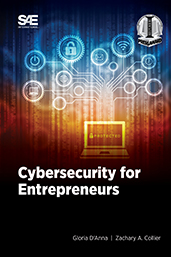Book

Cybersecurity for Entrepreneurs
2023-05-30
With all that is involved in starting a new business, cybersecurity can easily be overlooked but no one can afford to put it on the back burner. Cybersecurity for Entrepreneurs is the perfect book for anyone considering a new business venture. ...Written by cybersecurity experts from industry and academia, this book serves as an all-inclusive reference to build a baseline of cybersecurity knowledge for every small business. ...Written by cybersecurity experts from industry and academia, this book serves as an all-inclusive reference to build a baseline of cybersecurity knowledge for every small business. Authors Gloria D’Anna and Zachary A. Collier bring a fresh approach to cybersecurity using a conversational tone and a friendly character, Peter the Salesman, who stumbles into all the situations that this book teaches readers to avoid.
